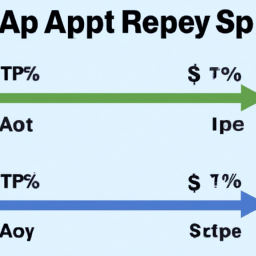Understanding Annual Percentage Yield (APY)
In many ways, Annual Percentage Yield (APY) is the key to understanding the value of your investments, savings, and other financial products. Knowing what it is, how it works, and how to make the most of it can help you make smarter financial decisions.
What Is APY?
APY, or Annual Percentage Yield, is the measure of interest that is paid on a financial product or account over the course of a year. It is calculated by taking the annual rate of interest and accounting for the frequency of compounding. Compounding is the process in which interest is calculated and added to the principal balance of a financial product or account. The more frequent the compounding, the higher the APY.
For example, if an account has an interest rate of 1.00% but is compounded daily, the APY will be higher than if the interest is compounded monthly. This is because the daily compounding adds additional interest to the account more frequently than the monthly compounding.
How Does APY Work?
APY works by taking the interest rate that is paid on a financial product or account and factoring in the frequency of compounding. By doing this, it gives investors a better understanding of how much they can expect to earn on their investments over the course of a year.
When comparing different financial products or accounts, an investor should pay attention to the APY. This is because the APY will give them a better idea of how valuable an investment is over the long-term. For example, an investor may be comparing two different savings accounts. While one of the accounts has a higher interest rate, the other may have a higher APY due to the frequency of compounding.
In addition to understanding the value of their investments, investors should also be aware of the fees associated with the financial product or account. Some products may have higher APYs, but also have higher fees. When comparing products, it’s important to factor in both the APY and the associated fees.
What Is a Custodial Account and How Does it Work?
A custodial account is an account set up by an adult for a minor. The adult is referred to as the custodian, while the minor is the beneficiary. The custodian has the authority to manage the account and make financial decisions on behalf of the minor.
One of the most common uses of a custodial account is to save for a minor’s college education. The custodian can deposit money into the account and the interest earned is typically tax-deferred. This means that the money in the account will grow tax-free for the beneficiary until it is withdrawn.
In addition to college savings, custodial accounts can also be used to pay for a minor’s living expenses, such as food, clothing, and entertainment. However, the custodian must be careful to only use the money for the minor’s benefit, as any money withdrawn for the custodian’s own benefit will be subject to taxes and penalties.
How Can I Make the Most of APY?
When it comes to making the most of APY, there are a few things investors can do. First, investors should shop around for the best rate. By comparing different financial products and accounts, investors can find the one with the highest APY.
Another way to make the most of APY is to take advantage of compounding. By investing in products or accounts with higher compounding frequencies, investors can maximize their return.
Finally, investors should think about the long-term. While some financial products may offer higher APYs in the short-term, they may not be the best option for long-term investments.
